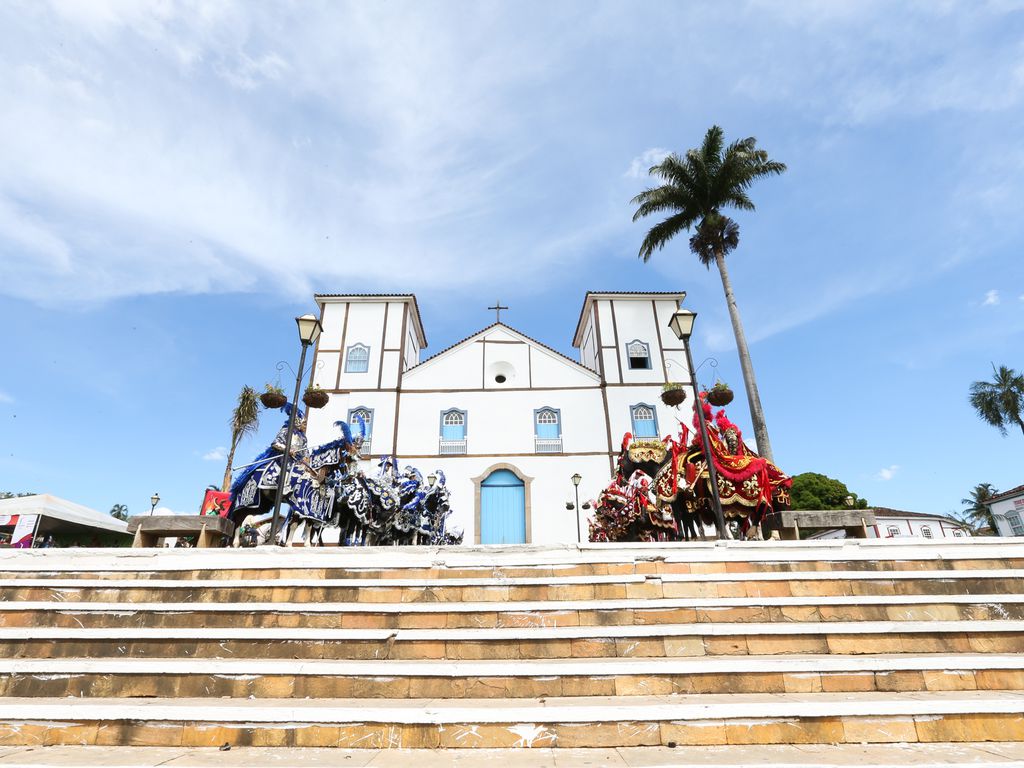BRASÍLIA, BRAZIL – While places like Chapada dos Veadeiros or the national capital, Brasília, come readily to mind when the subject is Central-West Brazil, Pirenópolis (in Goiás State) is also a trendy touristic destination in the region.
Still unknown among international tourists or even regular travelers from Rio and São Paulo, the city is a heritage site protected by IPHAN (Brazil’s Institute of Historical and Artistic Heritage Sites) for having a distinct municipal architecture that goes back to the eighteenth and nineteenth centuries. Other than its historical importance, Pirenópolis is also a natural sanctuary in the middle of the Cerrado biome.
Like many other cities in eighteenth-century Brazil – including those in Minas Gerais such as Ouro Preto, Mariana, and Diamantina – Pirenópolis became an urban center of economic importance due to the mining activities nearby. Once the most important economic city in Central-West Brazil, Pirenópolis has later experienced the downfall of the mining cycle in the region. As a consequence, the core of its urban landscape has not changed much.

Today, these preserved old buildings that tell a part of Brazil’s history are the reason attracting many tourists to Pirenópolis – which is often compared to Paraty, in Rio de Janeiro State, for its similar architectonic aesthetics.
Pirenópolis’ Historical Center is an obligatory visit for tourists. The old cinema Cine Pirineus, the Pirenópolis Theater, the Matriz Church, and the Nosso Senhor do Bonfim Church are some of the essentials of this area. To better understand the culture that has shaped Pirenópolis through time, make sure to check Museu do Divino, dedicated to the region’s most traditional and namesake festivity, and the Sacred Art Museum.
What’s more, the city is deep in the heart of the Cerrado, a savannah-like biome that, according to locals, has the most beautiful of all sunsets. For an unforgettable sunset view in Pirenópolis, head to the Matriz Church, which is higher than the rest of the city, or the Pirineus Peak.
The waterfalls are certainly a highlight of all the natural beauties near Pirenópolis’ historical center: there are at least 80 concentrated in the area. Most of them are fairly accessible (usually with paved access) is an excellent advantage for those not used to physically demanding hiking or traveling with family.
Some of the most recommended among the closest and easiest ones to get to, Abade, Lázaro, Santa Maria, Rosário, Bonsucesso, Paraíso, and Lobo waterfalls. Falls like Araras, Coqueiro, Garganta, Meia Lua, and Usina Velha are more distant but worth the experience for those spending more time in the city. Please note that an entrance fee is charged from visitors to most (if not all) waterfalls in Pirenópolis.
Staying in Pirenópolis also means experiencing the best of the typical cuisine from Goiás. Corn-based dishes like pamonha (resembling a tamal), local vegetables like guariroba (a bitter edible palm), or fruits like pequi (high in vitamin C) are some of the prevailing ingredients in the culinary traditions of Pirenópolis. To have excellent Goiás food, try restaurants like As Flor, Dona Cida, Tempero do Rosário, and Piqui do Piri.
The restaurant scene in Pirenópolis is much more than the local flavors. There is good Italian cuisine at both Maiale, and Bottega do Malte and Arab food at Rosário 26 Pub. For Japanese dishes, Tsu Jiro Sushi is the correct address.
If you want to make the most out of Pirenópolis’ nature, the dry season (May-July) is usually the most recommended time to visit the region. If you want to experience the city during a festive occasion, the Food Festival in August, and the Divino Festivity, around a month after Easter are strong suggestions.
Getting to Pirenópolis from both Brasília and Goiânia usually takes around two hours by car.

